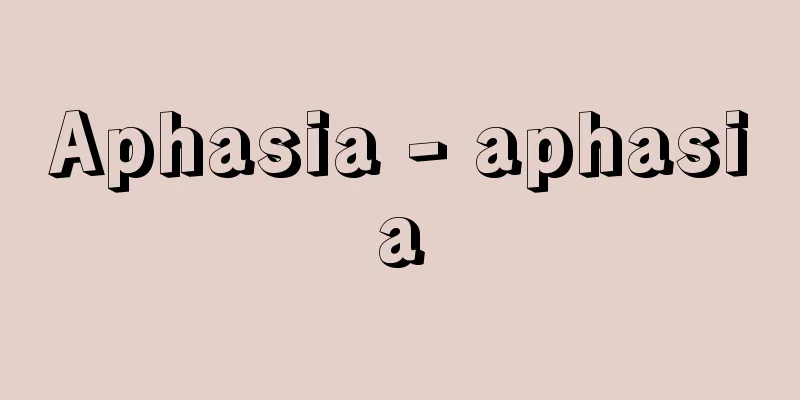Xuanzang - Genjo

|
A Buddhist scholar from the Tang Dynasty in China. Renowned as a great traveler and translator. The founder of the Hosso sect of Buddhism. His real name was Yi. His common surname was Chin. He was known as Tripitaka Priest. He was from Luozhou, Hui County (Chenliu, Henan Province). He was born in 602 (the second year of Renshou, although there are other theories, including that it was 600 years ago), as the fourth son (and youngest child) of his father, Hui. He was intelligent even at a young age, and was always fond of the classics. After losing his father at around the age of 11, he lived at the Pure Land Temple in Luoyang, following his older brother Changjie, who had already become a monk. In 614 (the 10th year of the Daye era), he accepted the imperial decree of becoming a monk, and his talent was recognized by the Minister of Great Li, Zheng Shanguo, who selected him, so he became a monk. He continued to stay at Jodo-ji Temple, studying the Nirvana Sutra and the Mahayana Treatise under the monks Kei and Gon. In 618 (the first year of the Butoku era), encouraged by his older brother, he moved from Luoyang to Chang'an and lived at the Zhuangyon Temple, but was disappointed with the Buddhist world in Chang'an immediately after the political upheaval, and in the following year, 619, he traveled to Shu with his brother and arrived at Chengdu. After receiving full ordination in 622, he visited high priests in various places, and in the following year, 623, he returned to Chang'an again, living at the Daijue Temple and studying the Abhidharma-ron under the monk Dogaku. In 624, he participated in a lecture on the Setsu Mahayanaron by Hojo (567-645) and Soben (568-642), and both teachers had high hopes for his future. However, around this time, he realized the limitations of domestic Buddhist studies, and decided to study in India to clarify various questions, and devoted himself to preparations. Although he was unable to obtain official permission to leave the country, he made up his mind and secretly left Chang'an in the eighth month of autumn in 627 (the first year of the Jōgan period; some say 629). He traveled via the southern foot of the Tianshan Mountains, crossed the Hindu Kush Mountains, and entered Central India from the northern border of India, and finally arrived at the Nalanda Monastery in the country of Magadha in 630, where he met the monk Sīlabhadra (Kaiken) (some say 634). He spent the next five years studying under the master, focusing on the Yogacara-bhūmi-śāstra. In 635 he left his teacher and travelled around the Indian peninsula, passing through East India, South India and then West India. In 638 he returned to Nalanda Monastery and was reunited with his teacher. He then studied under various teachers in the area, but was particularly noted for studying under Jayasena (Shogun) Layman for around two years, focusing on the Yogacara treatises. In 640 he was invited by King Kumara of East India, staying at his palace for around a month, and was then invited by Sīladitya (Harshavardhana, King Kaijitsu) in Central India. The following year, in 641, he attended the 75-day Mushadai-e (a festival of the nobility) in Prayaga, and then returned home in the autumn, arriving in Chang'an in 645 (according to one theory, 643). In addition to Buddha statues and relics, he is said to have brought with him a total of 520 scrolls and 657 copies of Sanskrit texts. On February 1st of the same year, he had an audience with Emperor Taizong (Li Shimin), who was in Luoyang preparing for the expedition to Goguryeo, and in March he returned to Chang'an and stayed at Hongfu Temple, where he began preparing to translate Buddhist scriptures. On May 2nd of the same year, he began translating the Great Bodhisattva Tripitaka, and although he moved his translation site to Hongfu Temple, Koboin Temple, Ci'en Temple, and Gyokuka Temple, he continued translating under the well-organized system of translation until just before his death. The total number of Buddhist scriptures he translated was 75 volumes and 1,335 volumes, mainly Yoga-Victims treatises such as the Yogacarabhumi-śāstra and the Cheng-Victims' Discernment, which is just under a quarter of the total number of translations in China. In terms of quality, he also tried to standardize the translations and remain faithful to the original texts, which marked an era in the history of Chinese translation of Buddhist scriptures, and translations made after him are called new translations (previous translations are called old translations). In addition, his record of his travels on India and the Western Regions, Datō Saiikiki (Records of the Great Tang Dynasty's Western Regions), compiled at the request of the emperor immediately after his return, is famous as a valuable historical resource for learning about the geography, customs, culture, and religion of the region in the first half of the 7th century. He passed away on February 5, 664 (Rintoku 1), at the age of 63 (one theory says he was 65, but there are other theories). His disciples included Ki (Kiki), who became the de facto founder of the Hosso sect based on the Cheng Weishi Lun, as well as many other talented individuals. [Noriaki Hakamaya February 16, 2017] "The Life of Tripitaka Master of the Great Tang Dynasty, Translated and Annotated by Ei-ritsu, Hiko-saku, and Takada Osamu (included in "National Translation of the Complete Buddhist Scriptures, Historical Biography Volume 11", 1940, Daito Publishing)" ▽ "Triple Xuanzang - Historical Journey to the West" by Maejima Shinji (Iwanami Shinsho) ▽ "The Figure of Chinese Buddhism, Xuanzang" by Kuwayama Masanobu and Hakamaya Noriaki (1981, Daizo Publishing)" [Reference items] | | | | | | | | |©Shogakukan "> Xuanzang's Travels Volume 1: Translated by Xuanzang, compiled by Benji, published during the Southern Song Dynasty, held at the National Diet Library "Records of the Great Tang Dynasty in the Western Regions" Kasuga version, Volume 1, by Goho and others, translated by Xuanzang, published during the Kamakura and Nanboku-cho periods, held at the National Diet Library "The Cheng Wei-shitsu Lun" Source: Shogakukan Encyclopedia Nipponica About Encyclopedia Nipponica Information | Legend |
|
中国、唐代の仏教学者。大旅行家、大翻訳家として著名。法相(ほっそう)宗開創の祖。本名は褘(い)。俗姓は陳(ちん)氏。三蔵(さんぞう)法師の名で知られる。洛州(らくしゅう)緱氏(こうし)県(河南省陳留)の人。602年(仁寿2。ただし、このほかに600年説など諸説がある)、父慧(恵)(けい)の四男(末子)として誕生。幼にして敏、つねに古典に親しむ。11歳前後で父を失ったのち、すでに出家していた兄長捷(ちょうしょう)につき、洛陽(らくよう)の浄土寺に住する。614年(大業10)度僧の勅に応じ、人選の大理卿(たいりけい)鄭善果(ていぜんか)にその才を認められて出家。以後も浄土寺にとどまり、景(けい)法師や厳(ごん)法師より『涅槃経(ねはんぎょう)』や『摂大乗論(しょうだいじょうろん)』を学ぶ。618年(武徳1)兄に勧められ、洛陽から長安に移り、荘厳(しょうごん)寺に住したが、政変直後の長安仏教界に失望し、翌619年、兄とともに蜀(しょく)に向かい成都に至る。622年具足戒(ぐそくかい)を受けてのち、各地に高僧を訪ね、翌623年ふたたび長安に戻り、大覚寺に住して道岳(どうがく)法師より『倶舎論(くしゃろん)』を学ぶ。624年、法常(ほうじょう)(567―645)と僧弁(そうべん)(568―642)の『摂大乗論』の講筵(こうえん)に列し、両師から大いにその将来を嘱望されたが、このころより国内における仏教研究の限界に目覚め、諸種の疑点解明のためインド留学を決意し、その準備に専念する。国外出立の公式許可を得ることはできなかったが、627年(貞観1。一説に629年)秋8月、意を決してひそかに長安を出発。天山南麓(なんろく)を経由し、ヒンドゥー・クシ山脈を越えて、インド北辺から中インドに入り、630年ついにマガダ国のナーランダー僧院に至り、シーラバドラ(戒賢(かいけん))法師と対面(一説に634年)した。以後、法師について『瑜伽師地論(ゆがしじろん)』を中心に学ぶこと5年に及ぶ。635年いったん師のもとを去り、東インドから南インド、さらに西インドを経由してインド半島一巡の旅を終える。638年ナーランダー僧院に戻り、師と再会。その後は近辺の諸師について学んだが、とくにジャヤセーナ(勝軍(しょうぐん))居士(こじ)について2年ほど唯識(ゆいしき)の論典を中心に学んだことが注目される。640年、東インドのクマーラ王の招聘(しょうへい)を受け、彼の王宮に1か月ほど滞在、さらに中インドのシーラーディーティヤ(ハルシャバルダナ、戒日王(かいじつおう))に招かれる。翌641年プラヤーガでの75日の無遮大会(むしゃだいえ)に参列したのち、秋には帰国の途につき、645年(一説に643年)長安に帰った。 仏像、仏舎利(ぶっしゃり)などのほか、彼が請来(しょうらい)したサンスクリット原典は、総計520夾(きょう)、657部と伝えられている。同年2月1日、高句麗(こうくり)遠征準備のため洛陽にあった太宗皇帝(李世民)に拝謁、3月に長安に戻り、弘福(ぐふく)寺に住して仏典の翻訳準備にかかる。同年5月2日『大菩薩蔵経(だいぼさつぞうきょう)』の翻訳に着手、以後、訳場を弘福寺、弘法(ぐほう)院、慈恩(じおん)寺、玉華(ぎょくか)寺に移しながらも、整備された訳経組織のもとに死の直前までつねに翻訳に従事した。訳出仏典総数は、『瑜伽師地論』『成唯識論(じょうゆいしきろん)』など瑜伽唯識の論典を中心に計75部1335巻に及び、この分量は中国歴代翻訳総数の4分の1弱に相当する。また質的な面でも、訳語の統一を図り、原文に忠実たらんとした跡がみられ、中国訳経史上に一時代を画したため、彼以降の訳を新訳(以前の訳を旧訳(くやく))とよぶ。なお、帰国直後、帝の求めに応じてまとめられたインド・西域に関する見聞録『大唐西域記(だいとうさいいきき)』は、7世紀前半の当該地方の地理、風俗、文化、宗教などを知るうえの貴重な史料として名高い。664年(麟徳1)2月5日、63歳(一説に65歳。ほか異説あり)で示寂。門下には、『成唯識論』を基本として事実上の法相宗初祖となった基(き)(窺基(きき))のほか幾多の俊才が輩出した。 [袴谷憲昭 2017年2月16日] 『慧立本・彦悰箋・高田修訳注『大唐大慈恩寺三蔵法師伝』(『国訳一切経 史伝部11』所収・1940・大東出版社)』▽『前嶋信次著『玄奘三蔵――史実西遊記』(岩波新書)』▽『桑山正進・袴谷憲昭著『人物中国の仏教 玄奘』(1981・大蔵出版)』 [参照項目] | | | | | | | | |©Shogakukan"> 玄奘紀行図 巻1 玄奘訳 弁機撰 南宋時代刊国立国会図書館所蔵"> 『大唐西域記』 春日版 巻1 護法等著 玄奘訳 鎌倉・南北朝時代刊国立国会図書館所蔵"> 『成唯識論』 出典 小学館 日本大百科全書(ニッポニカ)日本大百科全書(ニッポニカ)について 情報 | 凡例 |
<<: Maintaining the status quo
>>: Phenomenon - Phänomen (English spelling) German
Recommend
Kamakura Library
...In 1940, publishing control was strengthened, ...
ḥajj (English spelling) hajj
These facts suggest that the act of pilgrimage to...
Calc-alkaline basalt
This basalt belongs to the calc-alkaline rock seri...
Cnidocytes
Microscopic structures present in individuals of ...
Svalbard [Islands] - Svalbard
A Norwegian dependency located between 10° and 35°...
Rutile
Name of mineral ore. Also called rutile. It is in...
Dressing - Kimono
It refers to the act of dressing someone or the s...
Lower, R. (English spelling) LowerR
...One of the taboos in Judaism is the prohibitio...
Gujarat - Gujarat (English spelling)
A state in western India. It is mainly composed o...
Capeika
Kopjejka is a unit of currency in the Russian Fede...
Schröder, S.
…Blessed with the supple movements of an all-roun...
Sellers, Peter
Born: September 8, 1925, Southsea [Died] July 24, ...
Okinawa grasshopper - Okinawa grasshopper
...Hokkaido is home to the very similar G. ussuri...
Ferdinand [II] - Ferdinand
Holy Roman Emperor (1619-1637). Grandson of Ferdin...
William of Ockham
English scholastic philosopher. Also known as Wil...









